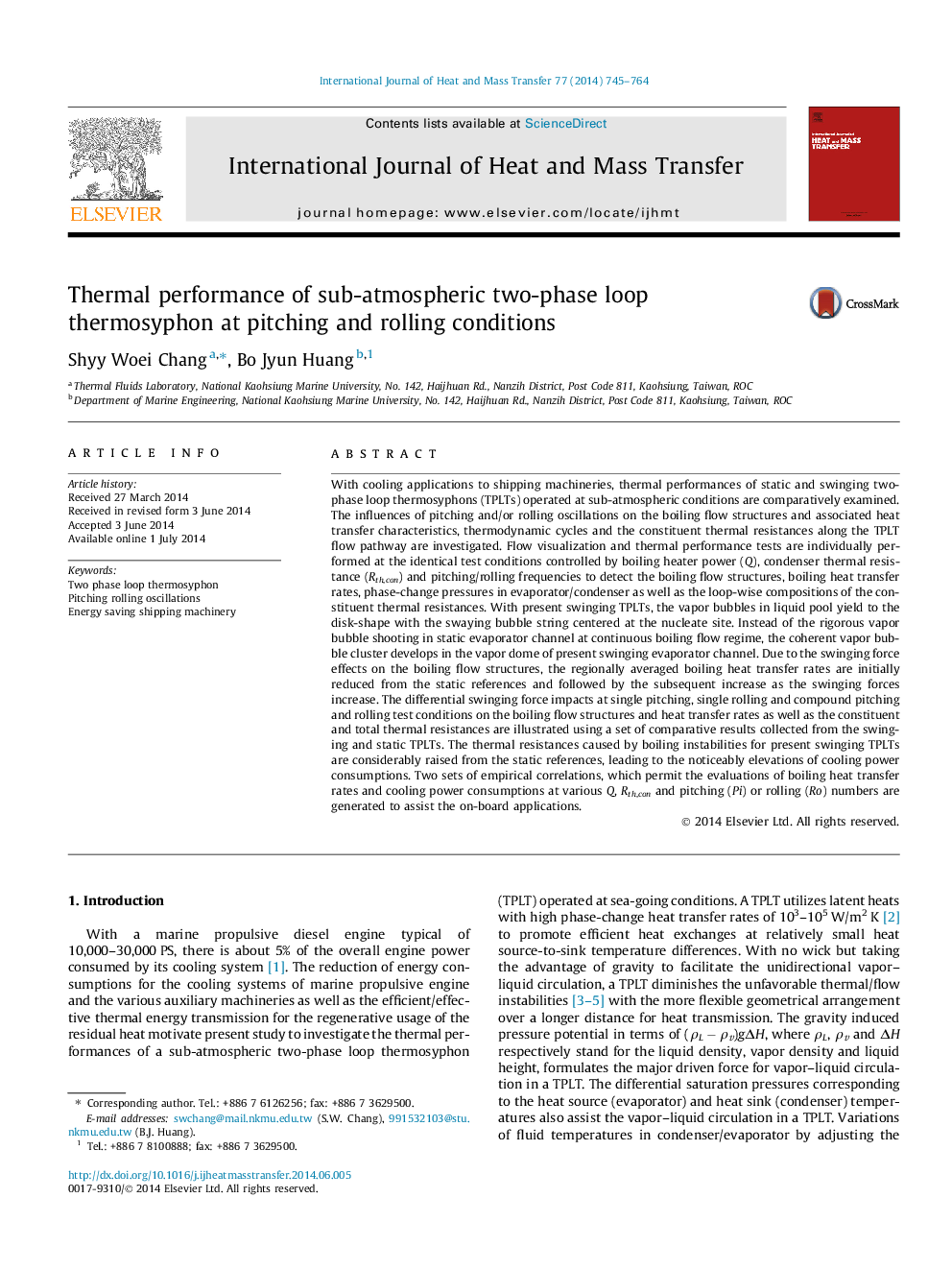| کد مقاله | کد نشریه | سال انتشار | مقاله انگلیسی | نسخه تمام متن |
|---|---|---|---|---|
| 657827 | 1458065 | 2014 | 20 صفحه PDF | دانلود رایگان |
عنوان انگلیسی مقاله ISI
Thermal performance of sub-atmospheric two-phase loop thermosyphon at pitching and rolling conditions
ترجمه فارسی عنوان
عملکرد حرارتی ترموسفون حلقه دو فاز زیر اتمسفر در شرایط سنگ زنی و نورد
دانلود مقاله + سفارش ترجمه
دانلود مقاله ISI انگلیسی
رایگان برای ایرانیان
موضوعات مرتبط
مهندسی و علوم پایه
مهندسی شیمی
جریان سیال و فرایندهای انتقال
چکیده انگلیسی
With cooling applications to shipping machineries, thermal performances of static and swinging two-phase loop thermosyphons (TPLTs) operated at sub-atmospheric conditions are comparatively examined. The influences of pitching and/or rolling oscillations on the boiling flow structures and associated heat transfer characteristics, thermodynamic cycles and the constituent thermal resistances along the TPLT flow pathway are investigated. Flow visualization and thermal performance tests are individually performed at the identical test conditions controlled by boiling heater power (Q), condenser thermal resistance (Rth,con) and pitching/rolling frequencies to detect the boiling flow structures, boiling heat transfer rates, phase-change pressures in evaporator/condenser as well as the loop-wise compositions of the constituent thermal resistances. With present swinging TPLTs, the vapor bubbles in liquid pool yield to the disk-shape with the swaying bubble string centered at the nucleate site. Instead of the rigorous vapor bubble shooting in static evaporator channel at continuous boiling flow regime, the coherent vapor bubble cluster develops in the vapor dome of present swinging evaporator channel. Due to the swinging force effects on the boiling flow structures, the regionally averaged boiling heat transfer rates are initially reduced from the static references and followed by the subsequent increase as the swinging forces increase. The differential swinging force impacts at single pitching, single rolling and compound pitching and rolling test conditions on the boiling flow structures and heat transfer rates as well as the constituent and total thermal resistances are illustrated using a set of comparative results collected from the swinging and static TPLTs. The thermal resistances caused by boiling instabilities for present swinging TPLTs are considerably raised from the static references, leading to the noticeably elevations of cooling power consumptions. Two sets of empirical correlations, which permit the evaluations of boiling heat transfer rates and cooling power consumptions at various Q, Rth,con and pitching (Pi) or rolling (Ro) numbers are generated to assist the on-board applications.
ناشر
Database: Elsevier - ScienceDirect (ساینس دایرکت)
Journal: International Journal of Heat and Mass Transfer - Volume 77, October 2014, Pages 745-764
Journal: International Journal of Heat and Mass Transfer - Volume 77, October 2014, Pages 745-764
نویسندگان
Shyy Woei Chang, Bo Jyun Huang,
